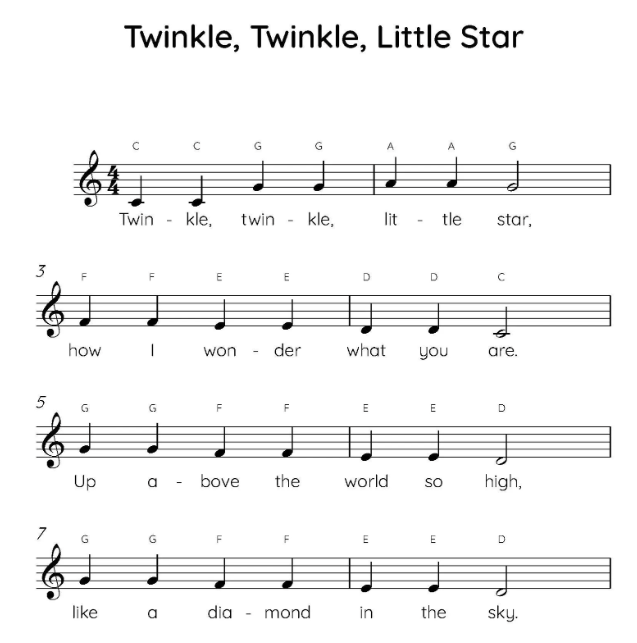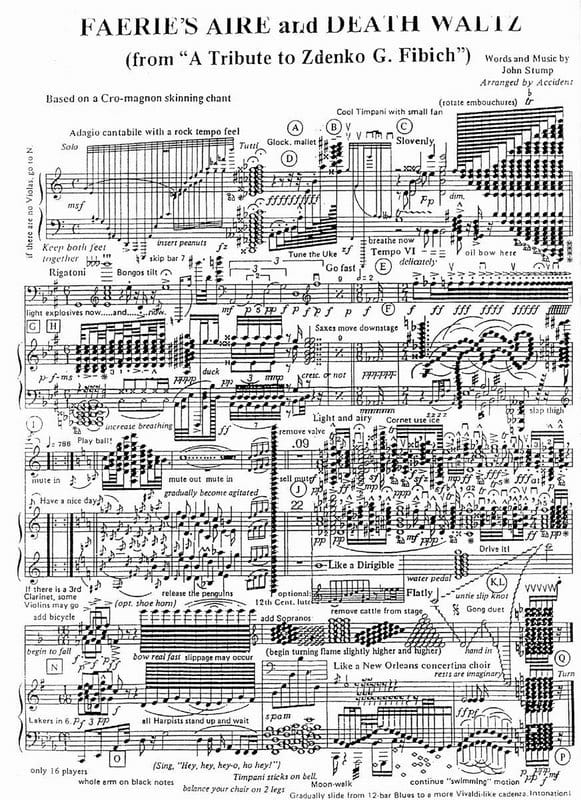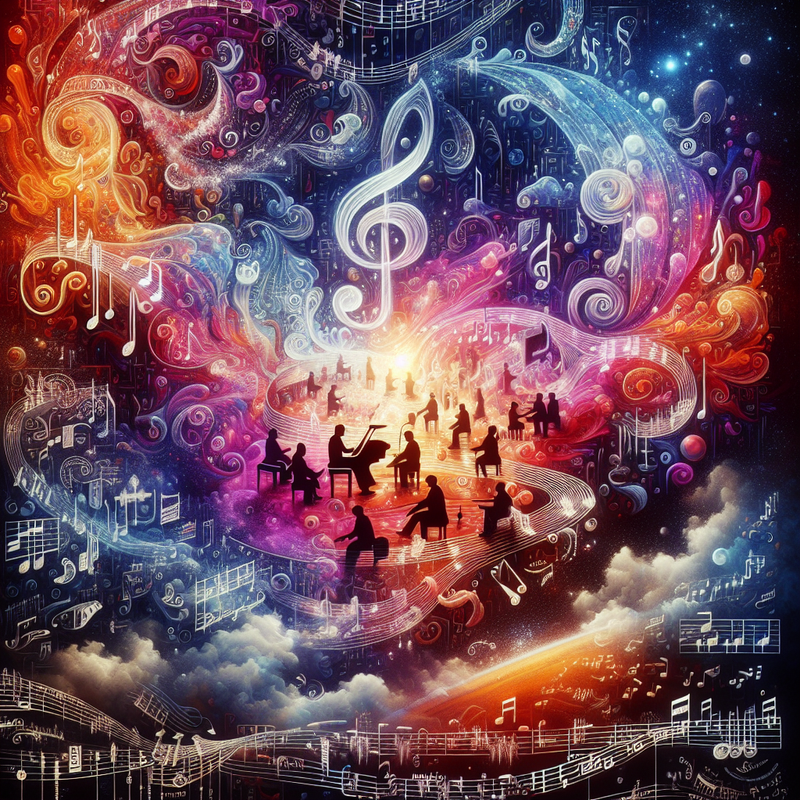Imagine classical music as a vibrant conversation—a language of emotions, stories, and dreams. Composers pour their souls into their compositions, and to share this magic with performers and listeners, they use a special musical alphabet: the written notation.
Musical notation is like a musical map that guides performers on how to bring a piece to life. It includes:
- Staff lines: Five horizontal lines on which notes are placed.
- Notes: Symbols indicating the pitch (how high or low) and duration (how long to hold the note).
- Dynamics: Symbols like p (piano, soft) or f (forte, loud) that tell performers how loudly or softly to play.
An example of the simplest sheet music:

Composers, from the Baroque era onward, carefully wrote these symbols to capture their musical ideas, ensuring that the spirit of their composition is preserved and shared across time and space.
An astounding piece to try and write down to retain instead of relying on memory - N. Paganini Caprice no. 5 (click here)
These are some of the poetic terms that indicate speed and mood—the heartbeat and soul of music.
- Andante — Think of a gentle, strolling walk. It means a moderate, relaxed tempo, inviting listeners to enjoy the music at a comfortable, unhurried pace.
- Allegro — Imagine a lively dance, full of energy and joy. Allegro indicates a fast, spirited tempo, bursting with enthusiasm and vitality.
- Adagio — A slow, graceful flow, like a tender lullaby or a peaceful sunset. It’s a slow and expressive tempo, perfect for reflection.
- Presto — The music races along at a very fast pace, like a swift breeze or a joyful celebration.
Each of these terms guides performers to paint with different emotional colors, telling stories through tempo and expression. They’re like musical adjectives—giving life, character, and love to the notes.
Writing music is an act of love—an invitation to experience a world beyond words. Every symbol and term is a heartfelt gesture, allowing musicians to breathe life into notes and share their innermost feelings with listeners. It’s a timeless dialogue, connecting composers, performers, and audiences in a shared journey of emotional discovery.
My favorite J.S. Bach piece The Well-Tempered Clavier is here.
An example of the most complex sheet music ever:

For my articles in this series, visit or bookmark the following;

Brent Antonson: Where Extraordinary Recall Sparks Insight.







